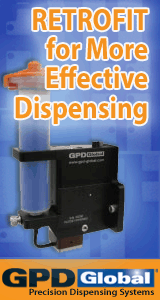Followed methods are commonly used in modern inventory management. This article briefly introduces these five methods.
First, ABC classification inventory control method, which is also known as Pareto analysis or Barreto analysis, Plato analysis, primary and secondary analysis, ABC analysis, classification management, material management, ABC management, Barre Special analysis method. We usually call it the "80 to 20" rule.
A company's total inventory can be divided into three categories: A, B, and C. When managing, the A-type inventory usually with high value, which should be managed and controlled with high attention; the B-type inventory is managed and controlled according to the usual method; C-type inventory are a large number of stocks, but they are of little value and can be managed and controlled in the easiest way.
For the control of Class A inventory, it is necessary to calculate the economic order quantity and ordering point of each item, and increase the order quantity as much as possible to reduce the inventory backlog; for the control of Class B inventory, the economic order quantity should also be calculated for each item in advance. And the order point, you can also share the perpetual inventory card to reflect the inventory dynamics; for the control of category C inventory, they are numerous, and the unit price is very low, so you can increase the quantity in each order to reduce the number of orders throughout the year.
Second, reorder point method. The reorder point (ROP) is the level of inventory which triggers an action to replenish that particular inventory stock. When there is uncertainty in the demand or completion cycle, appropriate safety stocks must be used to buffer or compensate for uncertainties. Reorder point = purchase lead time consumption + safety stock.
Third, the Economic order quantity method (EOQ)
Economic order quantity (EOQ) is the order quantity that minimizes the total holding costs and ordering costs. It is one of the oldest classical production scheduling models.
EOQ applies only when demand for a product is constant over the year and each new order is delivered in full when inventory reaches zero. There is a fixed cost for each order placed, regardless of the number of units ordered. There is also a cost for each unit held in storage, commonly known as holding cost, sometimes expressed as a percentage of the purchase cost of the item.
We want to determine the optimal number of units to order so that we minimize the total cost associated with the purchase, delivery and storage of the product.
The required parameters to the solution are the total demand for the year, the purchase cost for each item, the fixed cost to place the order and the storage cost for each item per year. Note that the number of times an order is placed will also affect the total cost, though this number can be determined from the other parameters.
Fourth, stock-taking method, which is also called "inventory checking". It is the physical verification of the quantities and condition of items held in an inventory or warehouse. This may be done to provide an audit of existing stock. It is also the source of stock discrepancy information.
The purpose of this method is
- To find out whether the actual inventory is consistent with the account card;
- To identify the real cause of the profit and loss of inventory;
- To identify the quality of the stocked goods;
- To Find out if there is any inventory that exceeds the storage period.
Fifth, just-in-time (JIT) inventory management.
It is an advanced production method, related to the so-called "zero inventory" point of view.
It is also know as lean manufacturing and sometimes referred to as the Toyota production system (TPS), is an inventory strategy that manufacturers use to increase efficiency. The process involves ordering and receiving inventory for production and customer sales only as it is needed to produce goods, and not before.







